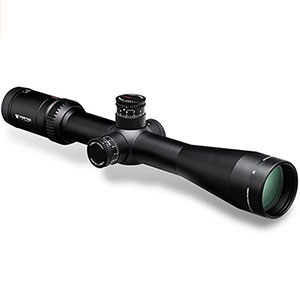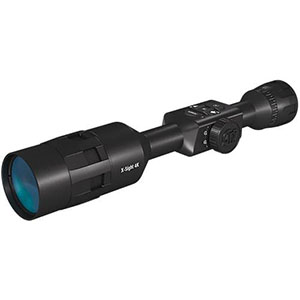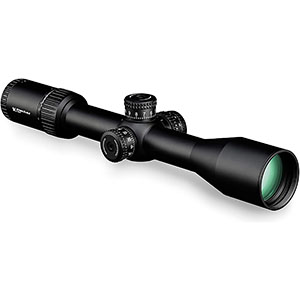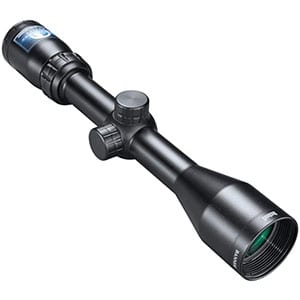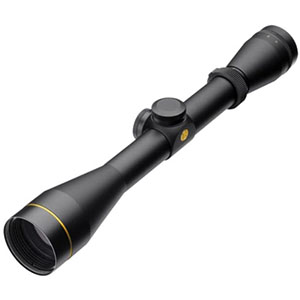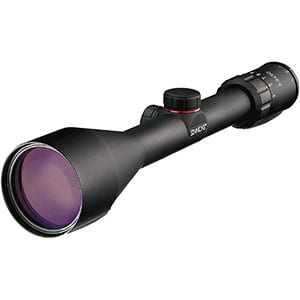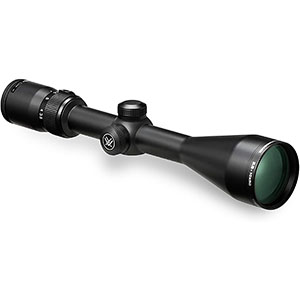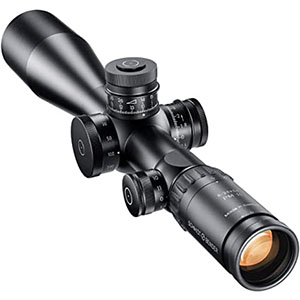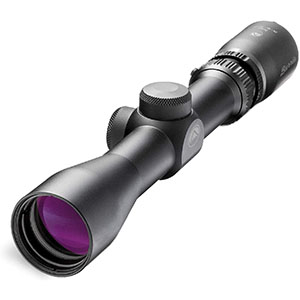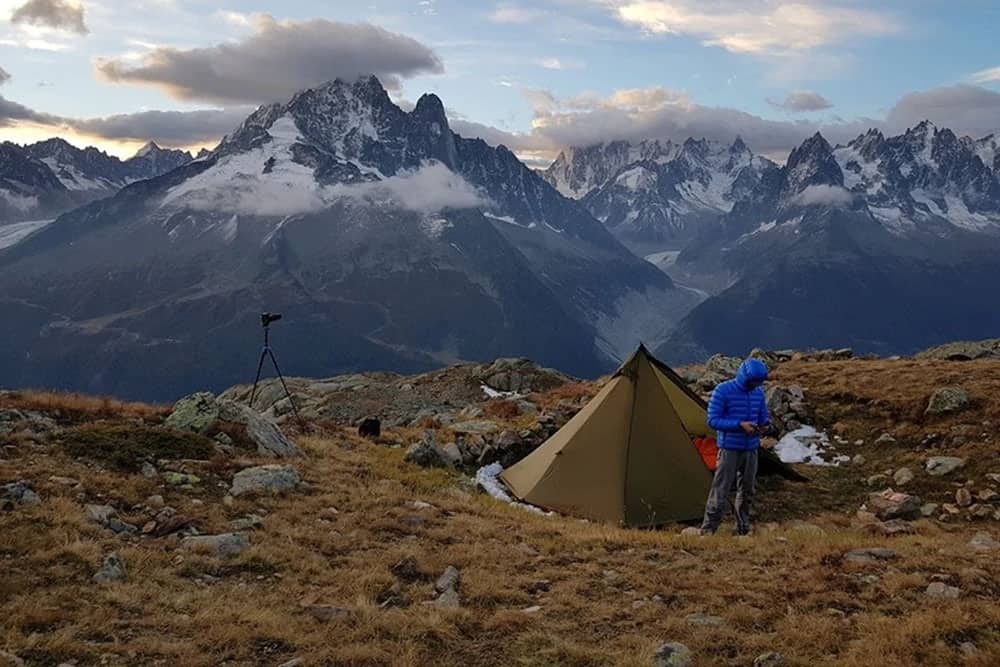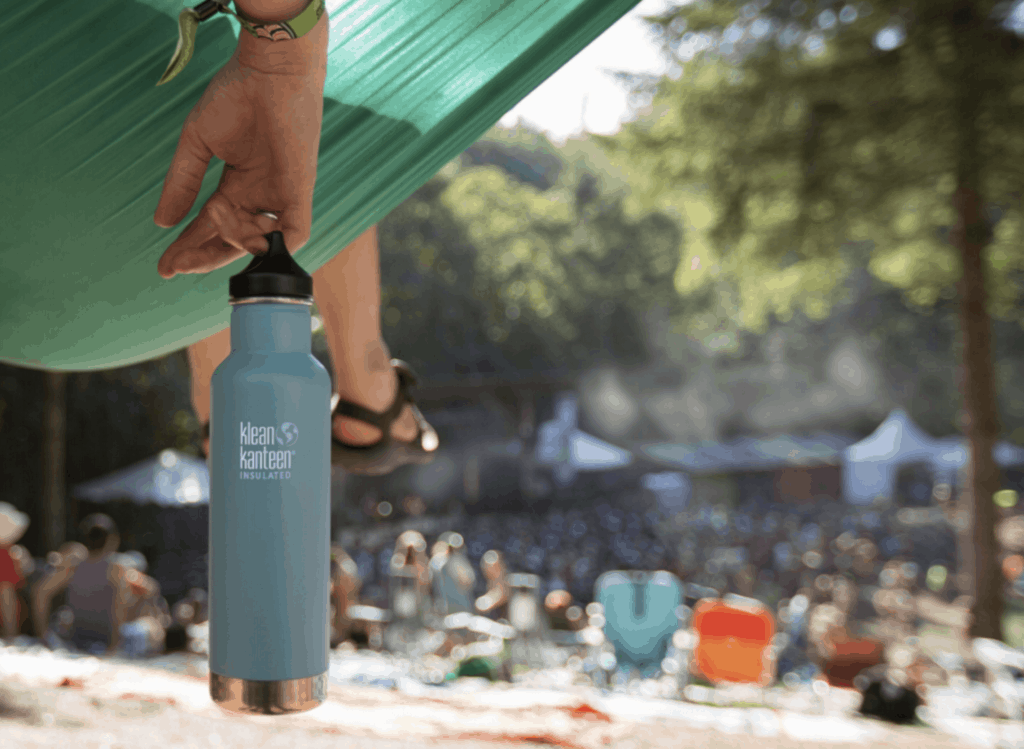A long range scope expands your hunting horizons and enables you to get off clean, effective shots at targets hundreds of yards away.
The best long range scopes feature lenses by such renowned manufacturers as Leupold, Swarovski, and Zeiss, offer adjustable magnification, and enable you to compensate for environmental factors, including wind and gravity.
We put dozens of today’s most popular long range scopes to the test and determined that the following are the best on the market today.
1. Vortex Optics Viper HST
The Viper HST (hunting, shooting, tactical) long range scope from Vortex is a (somewhat) affordable, world-class, long range scope with 4-16X adjustable magnification and a 44mm objective lens that is crystal clear when maxed out. The tube is crafted from a single piece of aircraft grade aluminum, is argon-purged and fully waterproof.
The MOA reticle provides highly accurate guidance and delivers your round to the target without fail, provided you have a stable platform and a steady hand. The turrets adjust smoothly and dependably on the fly, while the integrated parallax adjustment virtually eliminates wasted shots. Whether you want to up your game at the range or raise your hunting experience a notch or two, you are going to find a lot to like here.
2. ATN X-Sight 4K Day/Night Rifle Scope
The ATN X-Sight 4K Day/Night Rifle Scope occupies a middle ground between video game and real-life long range scope. It’s like having a tiny PC mounted to your rifle and offers an insane number of ways to adjust so that you get a nice clean shot off every time. The X-Sight features recoil-activated video that allows you to record HD video of your ballistic efforts and stream video to your smartphone at the same time.
The Ballistic Calculator factors in wind, MOA, temp, humidity, distance to target and more. And the battery provides 18 hours of continuous use. There’s a laser range finder, a quick release mount, 5-20X adjustable magnification and enhanced night vision. An outstanding all-around value that seems like something of a gimmick but is anything but.
3. Vortex Optics Strike Eagle
The Vortex Strike Eagle is another outstanding affordable rifle scope with a glass etched reticle (MOA), zero resettable turrets and anti-reflective coatings on the outward facing lenses to improve light transmission and clarity. All the adjustment knobs provide smooth, dependable action in all conditions and click authoritatively in place. The glass is clear as a bell out to 24X with an MOA reticle with 11 brightness settings.
The tube is crafted from aircraft-grade aluminum, is nitrogen-purged and won’t fog up on you regardless of humidity. The 30mm tube sits nice and low on your rifle and is never knocked for a loop by recoil. This is a great choice for informed beginners. But grizzled veterans of the hunt will find plenty of reason to pick one up too.
4. Bushnell Banner Dusk & Dawn Riflescope
Bushnell has stepped up to the plate and hit one out of the park with their Banner Dusk & Dawn Riflescope. The Dusk & Dawn features 3 to 9 adjustable magnification, a 40mm objective lens, and single piece tube construction that’s O-ring sealed and totally waterproof. The windage and elevation adjustments are smooth and precise, while the air-to-glass surfaces are coated with multiple layers of anti-reflective material.
The Dusk & Dawn is notable for 2 things: it’s outstanding low light capability and it’s equally outstanding price. It doesn’t have the Zeiss lenses you will get with more expensive scopes. But it is crystal clear to its functional limit, never fogs up, and won’t fall apart if you drop your rifle or bang it against something. If you’re on a tight budget you can’t go wrong with this scope.
5. Barska Extreme Tactical 30mm Riflescope
Barska calls this their Extreme Tactical 30mm Riflescope. But we think a better word would be ‘Practical’. Everything about this long range scope is designed to facilitate success, not to prove how much smarter the engineers at Barska are than you. The MIL-Dot glass etched reticles bring the target reliably into focus with little muss or fuss.
The 50mm objective lens is clear as a mountain stream out to 40X. And the single piece tube construction keeps water and humidity outside where it belongs. This Barska scope is reliably shockproof, offers lockable elevation and windage adjustments and provides lens covers that flip up and out of your way.
6. Leupold VX-2 Waterproof Riflescope
Leupold scopes are renowned for their reliability, durability and accuracy. This VX-2 Waterproof Riflescope features the company’s crystal clear lenses, a single piece tube fashioned from aircraft grade aluminum, and simple, foolproof parallax adjustment. You can spend all day in a downpour in a swamp and this puppy will not fog up on you.
The VX-2 lenses reduce glare and provide true color transmission. The scope digs out details in low light, adjusting for elevation and windage is effortless and the custom dial system adjusts quickly to match your ballistic specifications.
7. Simmons 8-Point 3-9X50 Rifle Scope
The Simmons 8-Point 3-9X50 is an affordable scope that thinks it’s an expensive one. The 3 to 9 magnification and 50mm objective lens bring your quarry to you in high contrast color and with absolute clarity. With 3.75 inches of eye relief, sure grip elevation and windage adjustments and a quick acquisition eyepiece you won’t lose your target while you’re trying to adjust on the fly.
The tube is fashioned from aircraft grade aluminum, is tough as nails and 100% waterproof and fogproof. The true zero adjustment system holds firm no matter how much you jostle it around. Considering the price, clarity is good end to end. Not quite the equal of a Leupold, but close enough that you’ll start wondering why the huge price disparity.
8. Vortex Optics Diamondback 3.5-10X50
Vortex makes another appearance on our list, this time with their impressive Diamondback 3.5-10X50 Riflescope. The Diamondback may not be ideal for taking down elk at 1,000 yards, but few are the hunters who would even consider taking down elk at 1,000 yards. The one-piece tube is crafted from rugged anodized aluminum. It’s shockproof, argon purged, and 100% waterproof and fogproof.
The lenses are coated to reduce glare and produce sharp, high-contrast images even in low light. Resetting to zero is quick and painless, while the bullet drop compensator reticle keeps you on target in any conditions.
9. Schmidt Bender PMII 5-25X56
The small family-owned company Schmidt & Bender have made a name for themselves by sweating the details. That obsessive desire to achieve clock-like precision is evident in every component of their PMII 5-25X56 Riflescope. Schmidt & Bender scopes are assembled by hand and feature silky smooth adjustment in any conditions and unparalleled accuracy at extreme distances.
It’s easy to see why the US military bestowed a multi-million dollar contract on Schmidt & Bender to provide long range scopes for their special ops troops. Even at 25X magnification you have flawless clarity and pinpoint accuracy. You’re going to pay through the nose for the Schmidt & Bender PMII. Then again, you may never need another long range scope.
10. Burris 200261 Ballistic Plex
We conclude our list of the best long range scopes with this beauty from Burris. The 200261 Ballistic Plex Scope is an ideal match for your versatile scout rifle. The Ballistic Plex scope is compact, lightweight, tough as nails and crystal clear out hundreds of yards.
The Ballistic Plex 2-7X32 is purged with lab-grade nitrogen two dozen times to ensure a truly pristine environment that is waterproof, fogproof and resistant to the most extreme recoil. While the Plex steel on steel adjustment system is virtually foolproof, with nice clear clicks. The 200261 is true to the scout rifle creed of being practical, simple, reliable and extremely accurate. It will change the way you think about your scout rifle.
FAQs
What Is Long Range Scope?
A long range scope is essentially a telescope that attaches to the top of your rifle and allows you to zoom in on distant targets and get off an accurate shot. Rifle scopes come in different magnifications with the best offering a range of magnification. For example, from 3 times what you would see with the naked eye to 9 times what you see with the naked eye. Anyone who hopes to take down large game at a distance needs a long range scope to have any chance.
Good long range scopes allow you to adjust your shot vertically and horizontally in order to compensate for gravity and the wind. The best long range scopes use high quality lenses produced by some of the world’s top manufacturers including Leupold, Swarovski, Zeiss and others and enable you to correct for parallax, which typically occurs when the reticle isn’t in focus.
What Should You Look for When Buying a Long Range Scope?
Lens Quality – We could give a long-winded explanation about optics. But really, the best way to determine whether a long range scope has a good lens is to look through it. Of course, you can’t do that if you are purchasing your scope online. But you can do it by going to your local gun shop, or even your local Walmart, and trying out a few scopes. Make some notes about which ones are best and then use that information when purchasing online. In most cases you can’t lose when you choose a lens by a reputable manufacturer such as Leupold, Swarovski, Trijicon, Zeiss, US Optics or Schmidt and Bender. All of these companies have well-deserved reputations for producing high-quality glass.
Lens Size – When it comes to lenses the common belief is that wider must be better. Particularly when we’re talking long range scopes. To a certain extent, this is true. A high-quality 50mm lens will typically do a better job bringing your distant target into focus than a 30mm lens. The thing is, once you get past about 50mm the diameter of the lens itself starts to become a problem. A wider lens means a wider scope. And because the scope attaches to the top of the rifle, the wider the scope the higher it’s going to sit atop your rifle. As the vertical space between the center of the lens and the center of the barrel increases, the odds of getting off an accurate shot decreases. As a general rule, the less space between the scope and the barrel the better.
Body Material – You want the long range scope to be solid as a rock inside and out, end to end. You want it to be built to exacting tolerances that do not allow any element of the scope to rattle around. The materials used in the scope’s construction play a central role in the accuracy and durability of the scope. What you want is a scope whose body is crafted from something like 6061 aircraft grade aluminum (1). The body of the scope, mostly importantly the tube itself, should be fashioned from one piece of aluminum and not cobbled together from numerous parts. The more parts there are, the more parts there are that can come loose, start rattling around and negatively affect accuracy.
Magnification – It’s assumed that if you are buying a long range scope that you plan on shooting targets at a distance. Therefore, when it comes to magnification more power is typically a good thing. That said, deer and other game move all the time and you need to be able to follow them when they do, so adjustability is crucial. A 5-25×56 scope like the Schmidt Bender PMII, for instance, is a zoom scope that offers 5 to 25 times magnification. So you will be able to see targets at great distances very clearly. But you will also be able to pull back and keep them in your sights if they move closer to you. For the record the ‘56’ refers to the diameter of the objective lens (2), which is right about at the practical limit for lens diameter.
Reticle – Reticle refers to the lines of orientation that appear on the lens of an optical device. The reticle is essential for honing in on targets at great distances. The reticle in a long range lens is typically comprised of solid lines or dots or dashes that are evenly spaced along the horizontal and vertical axes. Reticles with plain solid lines are called duplex or multi-x reticles and are by far the most common type. With that type of reticle it really is just a matter of ‘X marks the spot’. When a reticle has dots and dashes they are used to account for windage and elevation. These can take quite a bit of getting used to but can be a game changer in windy conditions or when shooting from great distances.
Adjustable Turrets – Scope turrets (3) enable you to adjust the scope to account for distance, weather and other variables and should be considered essential for any long range scope. Shooting from great distances means accounting for gravity, which is always tugging on the round as it flies through the air. Some rounds can drop as much as 4 or 5 feet over the course of 500 yards. So if your buck is a thousand yards away you are going to have to do some fancy accounting for gravity and wind. As such, adjustable turrets are non-negotiable for any serious hunter of large game. In most cases you will probably want 100 MOA (4) or MIL (5) adjustment capability if you’re going to take down targets half a mile off.
What are Some Common Mistakes When Buying a Long Range Scope?
First time scope buyers often wind up getting a scope that is way more powerful than they need. The thinking seems to be that if powerful is good, then more powerful must be really good. But long range scopes are not supercars. There are a lot of other things that have to be considered before you plunk your hard-earned down on a piece of hardware you’re going to have for years to come. Another common mistake is getting scope rings that are taller than they need to be. Remember, the higher your scope sits above the barrel the harder it will be to deliver an accurate shot. Use the diameter of the objective lens as your guide to determining how high the scope will sit. The lower to the barrel the better.
What Do Numbers Like 3-9X40 Mean?
There are typically a lot of numbers on a long range scope and it can get confusing for people who have never had one before. Once you break it down though, you see it’s all really pretty straightforward. In the case of a 3-9X40 scope the 3 indicates the minimum magnification when you look through the scope. And 9 means the maximum magnification. So, a 3-9 scope has a magnification range of 3 to 9 times what is visible with the naked eye. The 40 indicates the diameter of the objective lens in millimeters. The objective lens (6) being the one at the far end of the scope from where you look in. Likewise, a 5-25X56 has a magnification range of 5 to 25 times what you would see with your naked eye, and an objective lens that is 56mm in diameter. In general, the wider the magnification range the more expensive the scope. But the more versatile as well.
What is Meant by Parallax?
Parallax describes the phenomenon wherein an object appears to inhabit different spaces when viewed from different angles. For instance, if you view Mars through a telescope in March the collection of stellar objects around it will be different than when you view the red planet through a telescope in September. That’s because the earth moved halfway around the sun in that time you are looking at Mars from a different angle in September.
Parallax in rifle scopes is a little more involved but the basic principle is the same. You can tell parallax is present if the reticle seems to float around on your target when you move your head. Most high-quality scopes allow for parallax adjustment. Correcting a parallax problem is pretty simple. Set the parallax adjuster to infinite then aim at something that is a known distance away. Then ratchet back the parallax adjuster until the reticle is crystal clear. Finally, move your eye around a bit to see if the reticle is floating on the target. If it isn’t you’ve corrected the parallax problem.
What is Meant by ‘Windage’ and ‘Elevation’?
Windage and elevation are 10 dollars words that actually just mean horizontal and vertical, respectively. The terms windage and elevation date back to the early days of artillery but have survived to the present day the same way ‘port’ and ‘starboard’ have survived in boating. Windage and elevation are all about adjusting the scope to accommodate the wind and to compensate for gravity as the bullet moves further away from the barrel.
What is MOA?
MOA stands for ‘minute of angle’ and it is another one of those grand old phrases that originated in the days of yore and has survived to the present. Just as a minute of time is 1/60th of an hour, so too a minute of angle is 1/60th of a degree. Conveniently, 1/60th of a degree also works out to almost exactly 1 inch at 100 yards.
MOA only comes into play when you are adjusting the scope to shoot at a distant target. It accounts for the drop of the bullet as it moves across space to the target. If you know the bullet you’re using will drop 4” over 200 yards, and you know that 1 minute of angle equals 2” at 200 yards, then you will adjust your scope up 2 minutes of angle to account for the 4” drop over 200 yards.
The Bottom Line
A long range scope is the second most indispensable piece of hunting gear after the rifle itself. It enables you to get the most out of your rifle and to execute efficient, humane kills even at great distances.
A good long range scope can take your hunting experience to the next level. It will open up new vistas and make your experience more exciting and rewarding, as well as safer and less wasteful. Use the above information to decide which long range scope is right for you.
